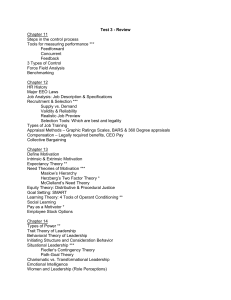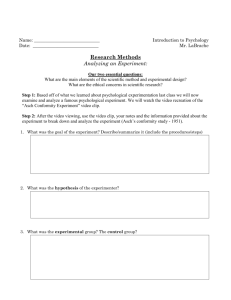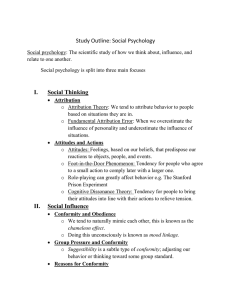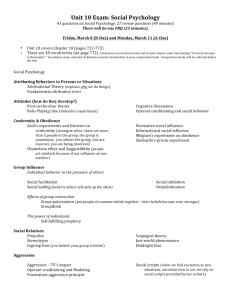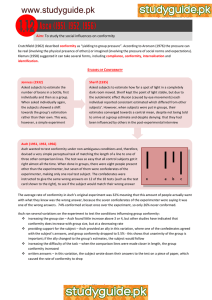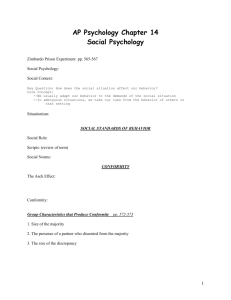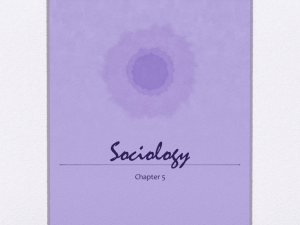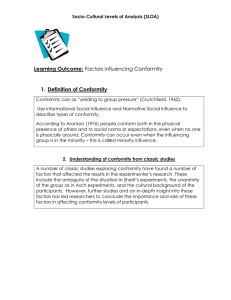Powerpoint for Part 1
advertisement
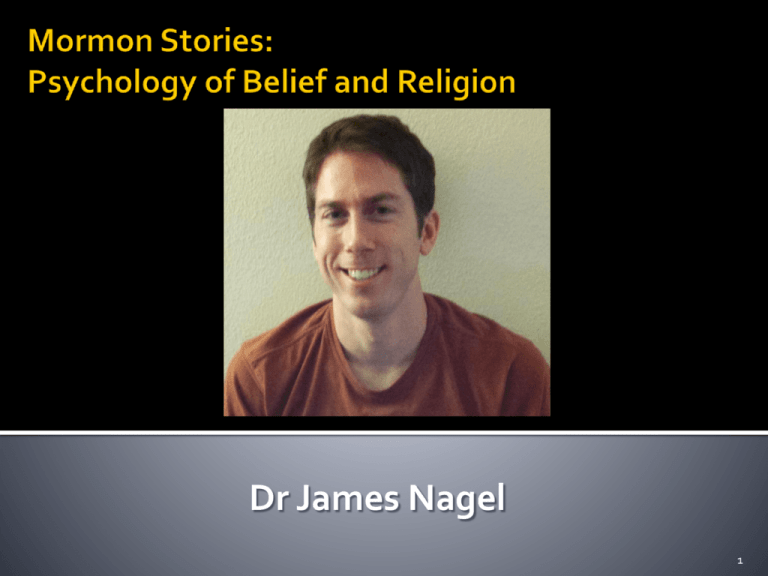
Dr James Nagel 1 Background: Education, Qualifications, Personal History Classic Experiments in Social Psychology Social Influence, Cognitive Bias, and Hallucinations Cognitive Theories of Natural Religion Agenticity, Culture, and Group Selection 2 BS/MS/PhD in Electrical Engineering Focus in applied electromagnetics Numerous publications in peer-reviewed journals Informal Education in Social Psychology Textbooks and academic journals 3 Born in California under Mormon upbringing Moved to Utah at age 16 Attended BYU for BS/MS educations in electrical engineering Formal religious study in BoM, D&C, and Bible Attended UofU for PhD Skeptical, empirical, rationalist 4 5 Heaven Hell "It seems to me that there is only one conceivable approach to these matters. If we have such an emotional stake in the answers, if we want badly to believe, and if it is important to know the truth, then nothing other than a committed, skeptical scrutiny is required." - Carl Sagan 6 Billions of people around the world possess absolute convictions in mutually inconsistent and incompatible ideas about God. They cannot all be right, but they can all be wrong. Whatever faith (or lack thereof) one may hold, we are inevitably faced with the issue of where all these theologies come from. 7 Even Christianity itself is split between numerous subgroups. LDS Church doesn’t make the list. How can we explain this behavior? What criteria determine the validity or error of any particular belief? 8 Time, gravitation, and motion are all intertwined. Sound crazy? We need a tool to differentiate between real knowledge versus made-up beliefs. It is okay to believe strange things, but that belief comes with a price. Belief is not a choice in the face of rigorous empirical evidence. Hafele, J. C. and Keating, R. E., “Around-the-World Atomic Clocks: Predicted Relativistic Time Gains,” Science, 177, 4044, (1972) Hafele, J. C. and Keating, R. E., “Around-the-World Atomic Clocks: Observed Relativistic Time Gains,” Science, 177, 4044, (1972) 9 10 People are not nearly as intuitive or rational as we like to think we are. Social pressure and cognitive bias hugely influence our decisions and beliefs. These techniques used everywhere: sales, military, politics, religion, etc. Scientific method works very hard to neutralize these deficits in human judgment. Knowing these techniques and pitfalls can help protect you and your family. Kassin, S, Fein, S, and Markus, H. R., Social Psychology, 7th Ed, Houghton Mifflin (2007) 11 Which bar is the same height as the reference? Control group = 98 % Asch, S. E., “Effects of group pressure upon the modification and distortion of judgments.” In H. Guetzkow (ed.) Groups, Leadership, and Men, Carnegie Press: Pittsburg, PA (1951). 12 Must first listen to six other responses before giving your answer. What happens if they all unanimously pick the WRONG bar? 18 tests total, 12 unanimously wrong decisions YOU 13 Average conformity rate: 37 % Individuals who conformed at least half of the time: 30 % Refusal to agree with any incorrect majority: 25 % B B B B B B ? 14 Identify a culprit in a lineup You may view the culprit for 5 seconds (easy) 0.5 seconds (hard) Baseline accuracy: Easy = 97 % Hard = 72 % If you do well, you will be rewarded Low importance = $0.0 High importance = $20.00 Baron, R. S., Vandello, J. A., and Brunsman, B., “The forgotten variable in conformity research: impact of task importance on social influence,” Journal of Personality and Social Psychology, 71, 5 (1996). 15 Two confederates speak first For 7/13 trials, the confederates unanimously pick the WRONG guy! How would you respond? B B ? 16 Uncertainty + high stakes = CONFORMITY Certainty + high stakes = DEFIANCE Mean number of conforming trials. 17 Heaven/hell are important God is uncertain Social pressure is high Upbringing is single greatest predictor of faith in adulthood. 18 A single dissenting ally tends to massively reduce conformity Ally Solo Asch, S. E., “Opinions and Social Pressure.” Scientific American, 193, 5 PA (1955). 19 People experience subtle, yet profound behavioral pressure from social groups. Conformity with false ideas can still occur even when the truth is literally sitting right in front of your face. Uncertainty plus importance leads to greater conformity. Dissent is key to keeping people honest and critical. 20
